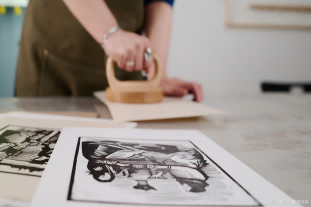In the highly refined and increasingly stringent quality requirements of the printing industry, print inspection is an important part of ensuring product quality and meeting customer needs. The zoom lens, as a core component of vision inspection technology, plays an indispensable role in print inspection by virtue of its unique performance advantages, and has become a key tool for improving inspection accuracy and efficiency.


Accurate focusing, details appear
Print inspection requires precise identification and comparison of details such as patterns, text and colors. The zoom lens is able to flexibly adjust the focal length within a certain range, realizing detailed observation from macro to micro. This capability enables inspectors to easily capture minute defects on printed materials, such as ink spots, color differences, scratches, etc., ensuring that each product meets quality standards.


High Definition, Low Distortion
The zoom lens adopts advanced optical design with high definition and low distortion characteristics. In the print inspection process, these characteristics ensure the authenticity and accuracy of the image output, avoiding misjudgment caused by image distortion. High-definition images allow inspectors to see every detail of the print more clearly, so as to make more accurate judgments.
Large depth of field, adaptable
Printed materials come in a wide variety of shapes, sizes and thicknesses. The large depth of field characteristics of the zoom lens makes it possible to maintain a clear image output at different working distances, without the need to frequently adjust the lens position to achieve a comprehensive inspection of the entire printed materials. This high degree of adaptability improves inspection efficiency and reduces operational difficulties.
Automated inspection, improve efficiency
With the development of automation technology, print inspection is also gradually to automation, intelligent direction. The zoom lens, as a key component in the automated inspection system, can be tightly integrated with other sensors and control systems to achieve fast and accurate detection of printed materials. Through the preset detection parameters and algorithms, the system can automatically determine the quality status of the printed materials and provide real-time feedback of the results, which greatly improves the detection efficiency and accuracy.
Reduce Costs and Enhance Competitiveness
Traditional print inspection often relies on manual visual inspection, which is not only inefficient but also prone to errors. The use of zoom lenses for automated inspection not only reduces labor costs, but also improves the accuracy and consistency of the inspection, thus reducing the defective rate and improving the quality and competitiveness of the enterprise.
Product recommendation
TECHNICAL SOLUTION
MORE+You may also be interested in the following information
FREE CONSULTING SERVICE
Let’s help you to find the right solution for your project!


 ASK POMEAS
ASK POMEAS  PRICE INQUIRY
PRICE INQUIRY  REQUEST DEMO/TEST
REQUEST DEMO/TEST  FREE TRIAL UNIT
FREE TRIAL UNIT  ACCURATE SELECTION
ACCURATE SELECTION  ADDRESS
ADDRESS Tel:+ 86-0769-2266 0867
Tel:+ 86-0769-2266 0867 Fax:+ 86-0769-2266 0867
Fax:+ 86-0769-2266 0867 E-mail:marketing@pomeas.com
E-mail:marketing@pomeas.com
